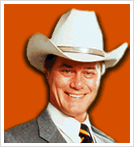"The history of attempts to fuse jazz and classical music has been long and ignominious. From the plasticizing efforts of George Gershwin and Paul Whiteman, through the rarefied preciousness of much of the "Third Stream," right on up to today's proliferating concertos for "jazz band and chamber orchestra," the tendency has been to abandon the strengths of both species for the weakness of a mutant. The first thing that needs to be said about Skies of America is that it transcends these previous attempts to such a degree that it has nothing whatever to do with them. It stands on its own as a work worthy of the most serious consideration, and it translates its composer's individuality as an improviser into orchestral terms.
Coleman's sound and style is one of a handful of truly distinctive contributions to the history of jazz. Bix, Louis, Bird, and Trane have all had their legions of copyists, but few players have been able to recreate the peculiar Coleman timbre, or to reproduce Coleman licks. Skies of America demonstrates that Coleman's uniqueness as a player is a facet of a highly personal musical conception; he manages to make the London Symphony Orchestra into an extension of his unique sensibility Coleman calls the theory that underlies his compositional endeavors "harmolodic." His modulations have a fresh, sometimes abrupt sound which seems to be a result of subordinating the chordal underpinning on which most music is based to the movement of melody. A certain melodic interval thus suggests a number of different chord changes, any one of which is "correct."
Because the piece represents America's skies, the parts are written in the higher ranges of the instruments. This unity of range and intent holds the piece together as much as the few themes which reappear. Coleman's alto enters halfway through the first side and his improvisations, some of which are pristinely clear a cappella statements, also help cement the work. Certain sections are optional or interchangeable, and the piece is designed to accommodate additional soloists. While a great deal of variety is present, from the openended, long-lined melodies of the opening and closing movements to the bright, tumbling parade sounds of some of the middle sections, the personal dimension permeates Skies on all levels, as one can discern quote after quote from Ornette's previous work. Certain heavy densities are reminiscent of the Greek composer Xenakis, and occasionally a jumble of melodies brings Charles Ives to mind, but the densities and jumbles all break down into individual lines that could only have been written by Ornette Coleman.
The most impressive quality of Skies of America is its emotional weight. The blues quality of much jazz playing is almost impossible to render into symphonic writing, but Coleman has long been known as a player of blues feeling rather than blues form, and he employs in Skies certain intervals that have "a human quality," intervals he originally discovered on his horn. This music will leave few listeners unmoved, and it leaves room for a multitude of personal reactions to the negative and positive qualities of life under America's skies. (RS 115)"
BOB PALMER, in rolling stone magazine, RS115
---------------------------------------------------------------------
ORNETTE COLEMAN - SKIES OF AMERICA (1972)
1. "Skies of America" — 2:49
2. "Native Americans" — 1:10
3. "The Good Life" — 1:33
4. "Birthdays and Funerals" — 3:13
5. "Dreams" — 0:51
6. "Sounds of Sculpture" — 1:20
7. "Holiday for Heroes" — 1:10
8. "All of My Life" — 3:08
9. "Dancers" — 1:17
10. "The Soul Within Woman" — 0:47
11. "The Artists in America" — 3:54
12. "The New Anthem" — 0:31
13. "Place in Space" — 2:44
14. "Foreigner in a Free Land" — 1:19
15. "Silver Screen" — 1:10
16. "Poetry" — 1:15
17. "The Men Who Live in the White House" — 2:48
18. "Love Life" — 4:34
19. "The Military" — 0:32
20. "Jam Session" — 0:39
21. "Sunday in America" — 4:29
link@320





























